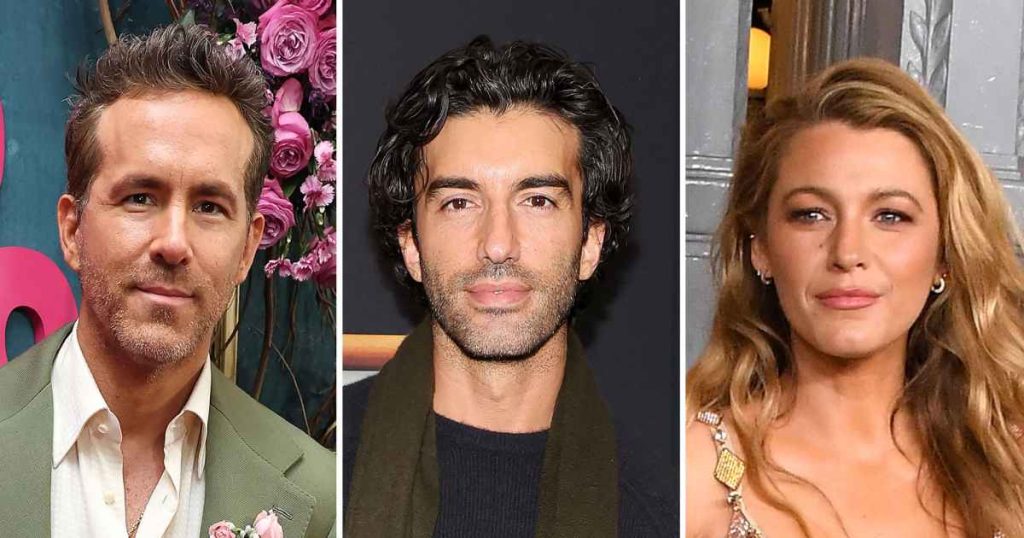The entertainment industry was rocked by a legal battle involving actors Justin Baldoni and Blake Lively, along with Lively’s husband, Ryan Reynolds. Baldoni initiated a $250 million lawsuit against The New York Times, alleging defamation stemming from an article detailing Lively’s accusations of sexual harassment against him during the filming of “It Ends With Us.” This lawsuit followed Lively’s own legal action regarding the same allegations, creating a complex and intertwined legal landscape. Baldoni’s legal filing painted a picture of a hostile encounter with Lively and Reynolds at their New York City apartment prior to filming. He accused the couple of publicly berating him for allegedly “fat-shaming” Lively, a claim he vehemently denied. This alleged confrontation, according to Baldoni, occurred in the presence of other celebrity acquaintances, further amplifying the humiliation he claims to have experienced.
The crux of the disagreement, as per Baldoni’s lawsuit, originated from a seemingly innocuous inquiry about Lively’s weight. This information was necessary for a scene involving Baldoni lifting Lively, a logistical concern given Baldoni’s pre-existing back issues. He had consulted his trainer, whom he knew through Lively and Reynolds, about the logistics and safety considerations of the lift, a query which he claims was relayed to the couple and subsequently led to the alleged confrontation. Baldoni maintains that his question was purely motivated by a desire to ensure safety and prevent injury during the scene, given his documented back problems, including multiple bulging discs.
Baldoni’s lawsuit describes the alleged confrontation with Lively and Reynolds as aggressive and unwarranted, forcing him into repeated apologies despite feeling justified in his inquiry. The aftermath, according to the lawsuit, saw Lively refusing to film the lift scene, even though it had been previously rehearsed with a stunt double. The legal filing even claims Lively threatened to walk away from the project unless Baldoni acquiesced to her preferred working methods, further escalating the tension on set. This clash, according to Baldoni’s narrative, transformed a routine pre-filming discussion into a personal and professional conflict, ultimately contributing to the larger legal battle.
Lively’s legal representative countered Baldoni’s claims, asserting that his lawsuit was predicated on a “false premise” and maintaining that the administrative complaint filed against Wayfarer Studios and others was not a tactical maneuver to avoid suing Baldoni directly. They encouraged a thorough review of Lively’s complaint to fully understand the context and dismiss the notion that litigation was not her intended goal. This response underscores the conflicting narratives at the heart of the legal dispute, with both sides presenting contrasting versions of events leading up to the lawsuits. Lively’s legal team made it clear that they intend to address all of Wayfarer’s allegations in court and maintain that the core issues of her initial complaint remain unchanged.
The New York Times, caught in the crossfire of these accusations, issued a firm statement standing by its reporting. The newspaper emphasized the meticulous nature of its investigation, asserting that the article was based on a comprehensive review of thousands of pages of documentation, including text messages and emails quoted verbatim within the piece. They challenged Baldoni, Wayfarer Studios, and other involved parties to identify any factual inaccuracies in their reporting, highlighting the lack of any such corrections to date. The Times underscored its commitment to independent journalism and its intention to vigorously defend against Baldoni’s lawsuit.
This complex legal battle involving high-profile figures in the entertainment industry showcases the inherent challenges of navigating accusations of harassment and misconduct, particularly within the context of professional relationships. The conflicting accounts presented by Baldoni and Lively, coupled with The New York Times’ robust defense of its reporting, highlight the intricacies and potential for diverging interpretations when personal interactions become the subject of legal scrutiny. The ongoing legal proceedings promise to further illuminate the details of this multifaceted dispute and potentially reshape the narrative surrounding the alleged events.

